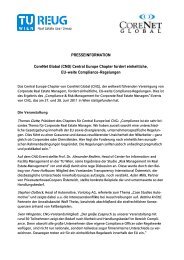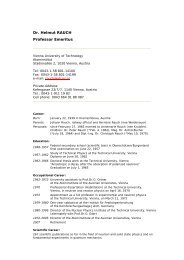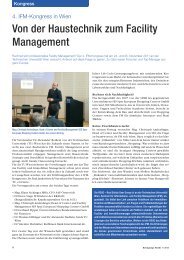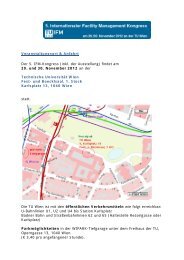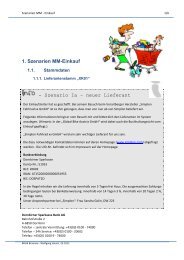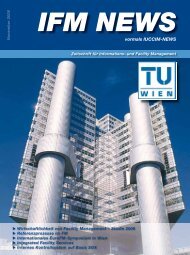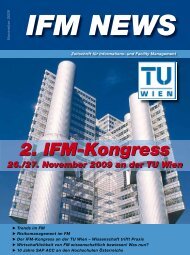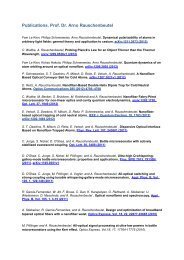Informal Market Worlds - Institute TU Wien
Informal Market Worlds - Institute TU Wien
Informal Market Worlds - Institute TU Wien
You also want an ePaper? Increase the reach of your titles
YUMPU automatically turns print PDFs into web optimized ePapers that Google loves.
Daan Roggeveen studied architecture at Delft University of Technology. Next to his work as founder anddirector of Go West Project, he is the Curator of the public programme at University of HongKong/Shanghai Study Centre. He is an often‐asked contributor to the debate about urban developmentin China.info@gowestproject.comwww.gowestproject.comBrechtje Spreeuwers, ShanghaiFate or Free Will? Alternative Development Strategies and DesignYudaishan urban village in Chongqing, a case studyUrban villages ( 城 中 村 , chengzhongcun) are former peasant villages that in China’s recent urbanizationprocess got enclosed by neighboring growing cities. An enormous demand for affordable housing in theChinese city of today thereupon ensures consolidation and growth of urban villages. Indigenousresidents of urban villages, most of them originally farmers, satisfies this demand for affordable housingby renting out their inexpensive, but often illegally and poorly constructed extensions to their familyhomes (Liu et al., 2010; Zhang et al., 2003). Hence, the rental housing market in an urban village reflects‘a mutual beneficial support between two groups of peasants [indigenous farmers and rural migrants]during the course of economic transformation’ (Zhang et al., 2003). Other roles of urban villages lie inproviding spaces for small‐scale open markets as well as human interaction. Moreover, residents oftenmention ‘human scale’ and intimacy as strong qualities of their direct environment. However, in thetransition from a farmer village to a fully grown urban village, lack of planning and building regulationsin combination with villagers’ pursuit of maximum profits often lead to extremely high densities anddilapidated environments. Therefore, local governments tend to refer to the phenomenon of urbanvillages as ‘cancer in the city’, places of crime and an agglomeration of all sorts of illegal activities (Du,2010). In combination with a profit‐led real‐estate market and central locations of most urban villages,this attitude often results in a massive short‐term demolition strategy, thus also obliterating the socialand spatial characteristics of these villages. Current research around urban villages mainly evolvesaround analysis and offers few if any practical alternatives to prevent short‐term demolition strategies.Hence, the gap between research, urban planning and design widens, while the actual interplaybetween them potentially offers more than just the sum of its parts. Based on a specific design proposalin Yudaishan urban village in Chongqing and by conducting ‘research by design’, this study aims atbridging this gap.Brechtje Spreeuwers recently graduated in both Architecture (MSc) in Delft and Sinology (MA) in Leiden.Her graduation project focused on the emergence of urban villages in China and provided anintervention of Yudaishan urban village in Chongqing. Her final thesis is currently under review forpublication. In the past few years she participated in a range of international design workshops andseminars in Delft (INDESEM), Chengdu (Urban Emergencies), Beijing (IFOU) and Wuhan (ISOCARP YPPWorkshop). She also collaborated in the Chinese – Dutch translation of a collection of short stories by SuTong that is forthcoming from publishing house ‘de Geus’ in January 2013. At present, she works on afull‐time basis as a researcher at the Go West Project in Shanghai.




